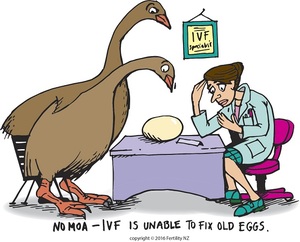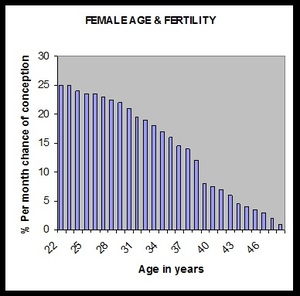Age and fertility
In a nutshell
- Women: fertility declines sharply from age 35
- Men: some studies show a reduction from age 40 in couples trying to become pregnant naturally, and from 50 when using IVF
- Learn your mother’s age at menopause: if earlier than the average of 52, you should seek advice earlier
- Have an AMH test to understand your ovarian reserve (egg numbers) compared to other women of the same age
- Plan for your last child, not your first!
- For a 90% chance of reaching the desired family size, the maximum age of the woman when you start trying is:
- 1 child: natural conception age 32, Assisted Reproductive Technology age 35
- 2 children: natural conception age 27, ART age 31
- 3 children: natural conception age 23, ART age 28
- 4.2% of men and 3.2% of women aged 45-54 years wished or still wish to have children, but have not had any
Know your mother’s age at menopause and/or have an AMH test
Mother’s age at menopause can help improve the prediction of your likely age at menopause. If your mother was younger than 50 at menopause, you may be advised to take an Anti-Mullerian Hormone (AMH) test or consider trying to conceive earlier. Note that egg quality declines significantly in the 10–20 years prior to menopause – menstruation does not mean that you are likely to become pregnant. Fertility virtually stops 5–7 years before menopause – there is only a very low chance of natural conception.
An AMH test is a measure of your ovarian reserve (how many eggs you have left). Although it is not a precise predictor of when you will reach menopause, or how likely you are to conceive, it gives an indication of your ovarian reserve compared with the average woman of the same age. AMH results should be considered in conjunction with other factors, including time of trying to conceive, fertile mucus and FSH results.
Plan your last child, not your first!
Couples and singles wishing to have children in the future should consider the number of children they want, together with the estimated chance of conception at various ages, particularly for the ‘last’ desired child.
Published data (1) illustrates the chance of having one, two or three children starting at various ages, with and without recourse to IVF (if needed).




